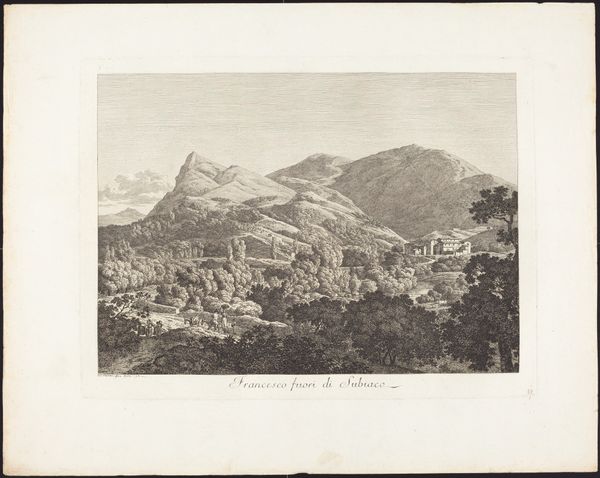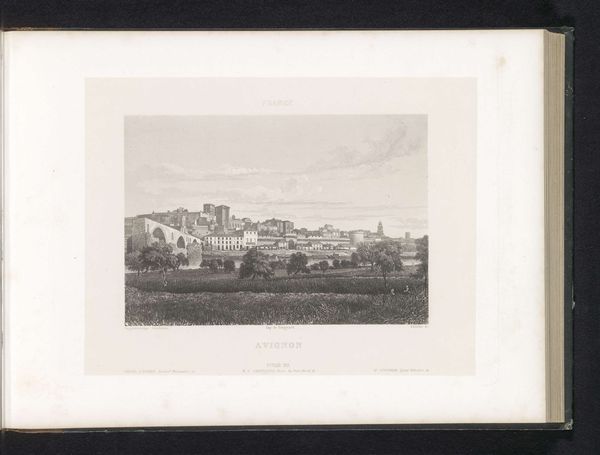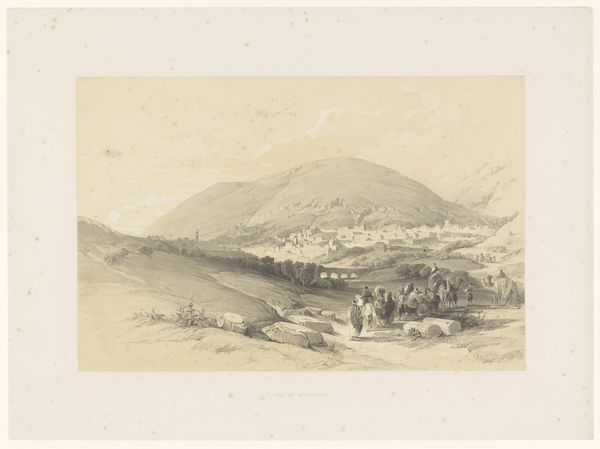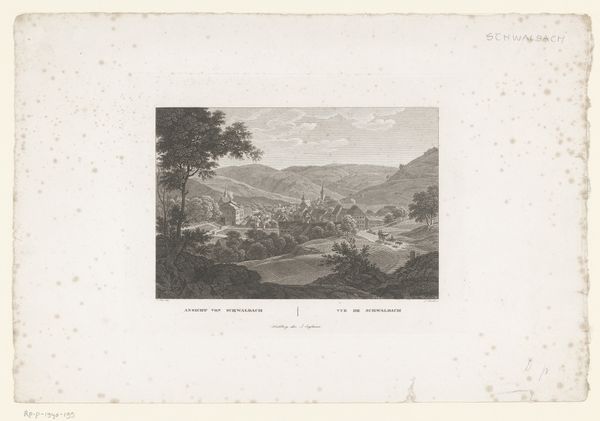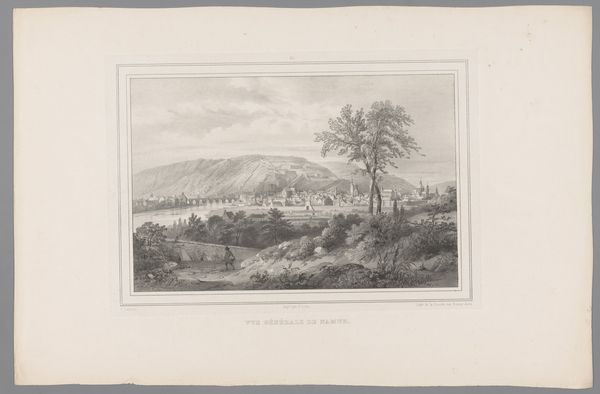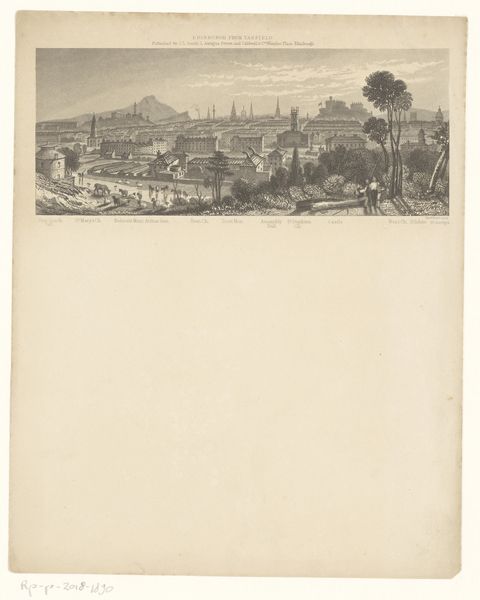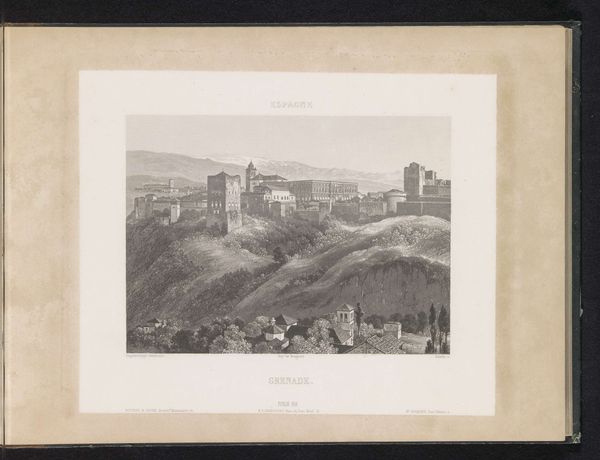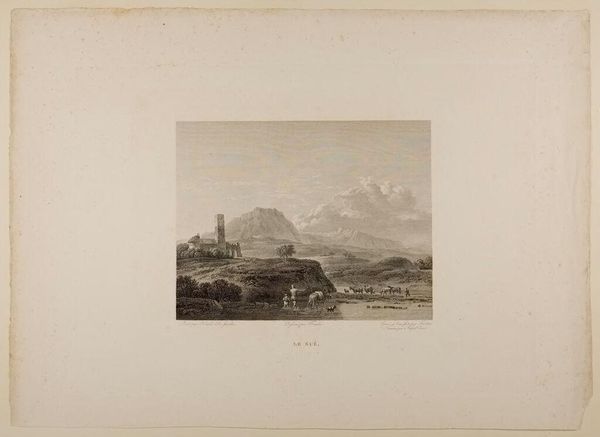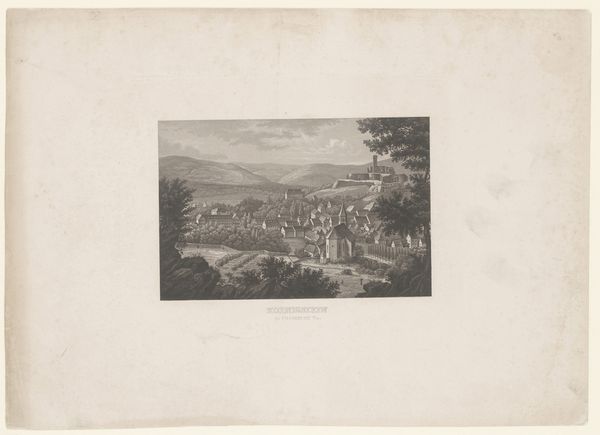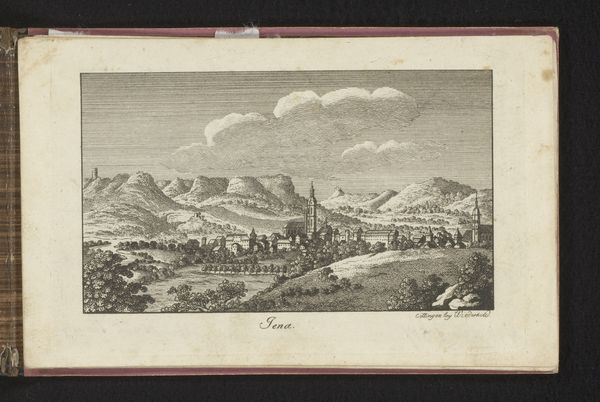
drawing, graphite
#
drawing
#
romanticism
#
graphite
#
cityscape
Dimensions: height 138 mm, width 188 mm
Copyright: Rijks Museum: Open Domain
Editor: This graphite drawing, "Gezicht op Trier," was created by Rudolf Bodmer between 1831 and 1833. The soft greyscale gives it such a serene, almost wistful feel. I'm curious, what do you see in this piece beyond the simple depiction of a city? Curator: I see the weight of history. Trier, as a Roman city, layers historical narrative with the burgeoning industrial revolution, a tension present throughout the Romantic era. How do you interpret the placement of the figures in the foreground, so small against the cityscape? Editor: I hadn't really focused on them, actually. They almost blend into the landscape. Curator: Exactly. They represent the individual's relationship to societal structures and historical forces. Remember, this period grappled with massive social upheaval. The artist invites us to consider whose perspectives are centered and marginalized in the grand narratives of nationhood and progress. How might the scale difference highlight those tensions? Editor: It positions the city, Trier, as enduring, almost eternal, while the figures seem temporary, their struggles possibly insignificant in the grand scheme of things. Curator: Precisely. Bodmer isn’t just depicting a pretty picture; he’s prompting a conversation about power, about legacy, and about our place within an ever-evolving historical context. It begs us to consider: who gets to write history, and whose stories are left out of the frame? Editor: I guess I hadn't thought about landscape art as being so overtly political. That's a powerful reading. Curator: It shows how even seemingly passive depictions of place can subtly convey messages about societal values and anxieties during times of upheaval and transformation. Editor: Definitely broadened my perspective!
Comments
No comments
Be the first to comment and join the conversation on the ultimate creative platform.
